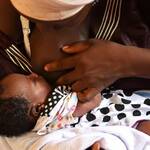Ghana unable to meet HIV reduction target for 10 years
New data from the Ghana AIDS Commission reveals that the country has not met its annual target of a 17% reduction in new HIV infections over the past decade.
Instead, a 14.8% decrease in new infections was recorded between 2013 and 2023.
The HIV population saw a 9% increase between 2013 and 2023 and is expected to rise by another 6.8% by 2030.
The data, presented by Dr. Kyeremeh Atuahene, Director General of the Ghana AIDS Commission, underscores the ongoing challenges in the fight against HIV/AIDS in Ghana.
Alarming new infections and mortality rates
In 2023, 17,774 new HIV infections were reported, including 6,457 males and 11,317 females.
This total includes 4,869 youth aged 15 to 24, 1,698 children under 15, 1,520 adolescents aged 10 to 19, and 16,076 adults over 15.
The data also showed that 12,480 Ghanaians died from AIDS-related illnesses in 2023, highlighting a significant mortality rate despite the availability of treatments that can prevent disease progression and fatalities.
Dr. Atuahene emphasized that these deaths should not be occurring with the current medical advancements.
“Despite the availability of treatments that prevent the disease’s progression and the deaths it causes, mortality due to AIDS continues to occur when it should not,” he stated.
Projections and population data
The projections for 2023 indicated that 334,095 people in Ghana were living with HIV, with 115,891 males and 218,204 females. This number includes 17,550 children under 14, 16,381 adolescents aged 10 to 19, 33,245 young adults aged 15 to 24, and 316,545 adults aged 15 and above.
Regional breakdown of PLHIV Population
The data provided a detailed regional breakdown of persons living with HIV and new infections.
The regional breakdown of persons living with HIV are Greater Accra-82,745, Ashantin-66,322, Eastern-40,963, Central-26,733, Western-23,338, Bono-18,564, Volta-16,016, Bono East-12,997, Western North-11,429, Ahafo-7,140, Upper East-6,954, Upper West-5,518, Northern-5,453, Oti-5,381, Savanna-2,853 and North East-1,689.
Regional breakdown of new infections
For new infections, Greater Accra-4,221, Ashanti-3,650, Eastern-2,096, Central-1,526, Western-1,235, Bono-934, Volta-778, Bono East-714, Western North-638, Ahafo-385, Upper East-360, Northern-322, Oti-318, Upper West-300, Savannah-185 and North East-112.
41% decrease target between 2023 and 2030
Dr. Atuahene mentioned that Ghana aims to achieve a 41% decrease in new HIV infections between 2023 and 2030.
To reach this goal, the country is committed to the global 95-95-95 targets: having 95% of people living with HIV aware of their status, 95% of those diagnosed receiving antiretroviral therapy (ART), and 95% of those on ART achieving viral suppression by 2025.
Currently, Ghana has achieved 65.3% for the first target, 69.4% for the second, and 89% for the third.
Reckless sexual behaviours
The Ghana AIDS Commission attributes the increasing cases of HIV in the country to the reckless lifestyle of young people.
People between the ages of 15 and 24 often engage in high-risk unprotected sex, contributing to the rising cases of HIV in the country.
Knowledge of HIV prevention is also quite low among young people
Majority of young women are into transactional sex; that is where they think that whenever they have sex with someone they should get something back, it can be money, it can be a gift, it can be any other thing in exchange for sex.
Apart from the Sugar Daddy-Sugar Mummy syndrome, they also engage friends-with-benefit, where they will have girlfriends, boyfriends having sex in exchange for money.
Funding challenges
Ghana needs about $132 million to effectively fight new HIV infections to ensure its elimination by 2030
Currently, funds from donor partners such as the United States President’s Emergency Plan for AIDS Relief (PEPFAR), the Global Fund and UNAIDS amount to $45.2 million, leaving a funding deficit of more than $86 million.
If Ghana does not make up for the deficit in funding, it may miss the target to eliminate the disease at the set target.
- Tight Race For Next GIS Boss - 10 March 2025
- Church of Jesus Christ, Ga Mantse Foundation renovate Adabraka School - 27 June 2024
- Manufacturers, Trade Minister tussle over proposed cement price regulation - 26 June 2024




